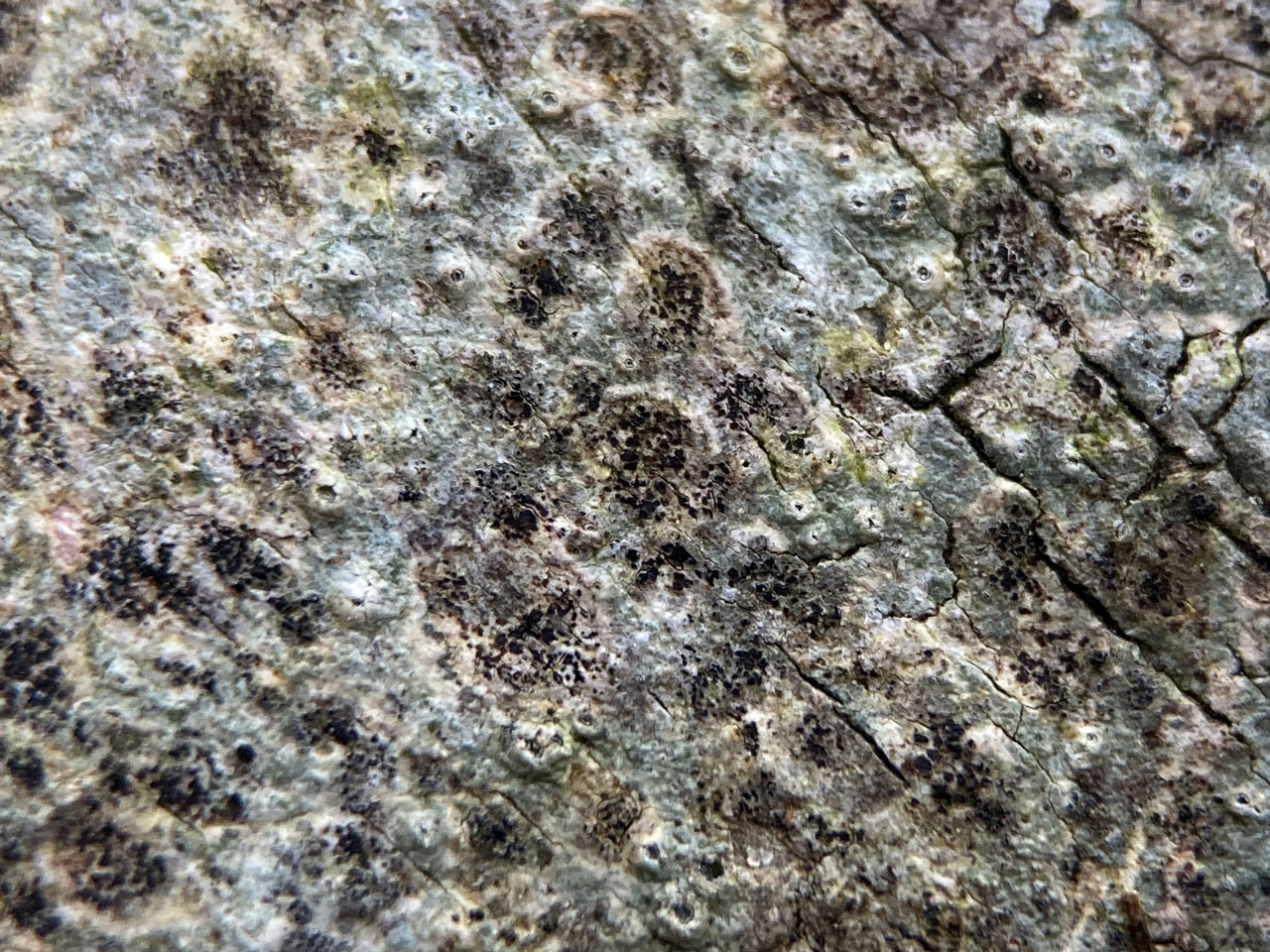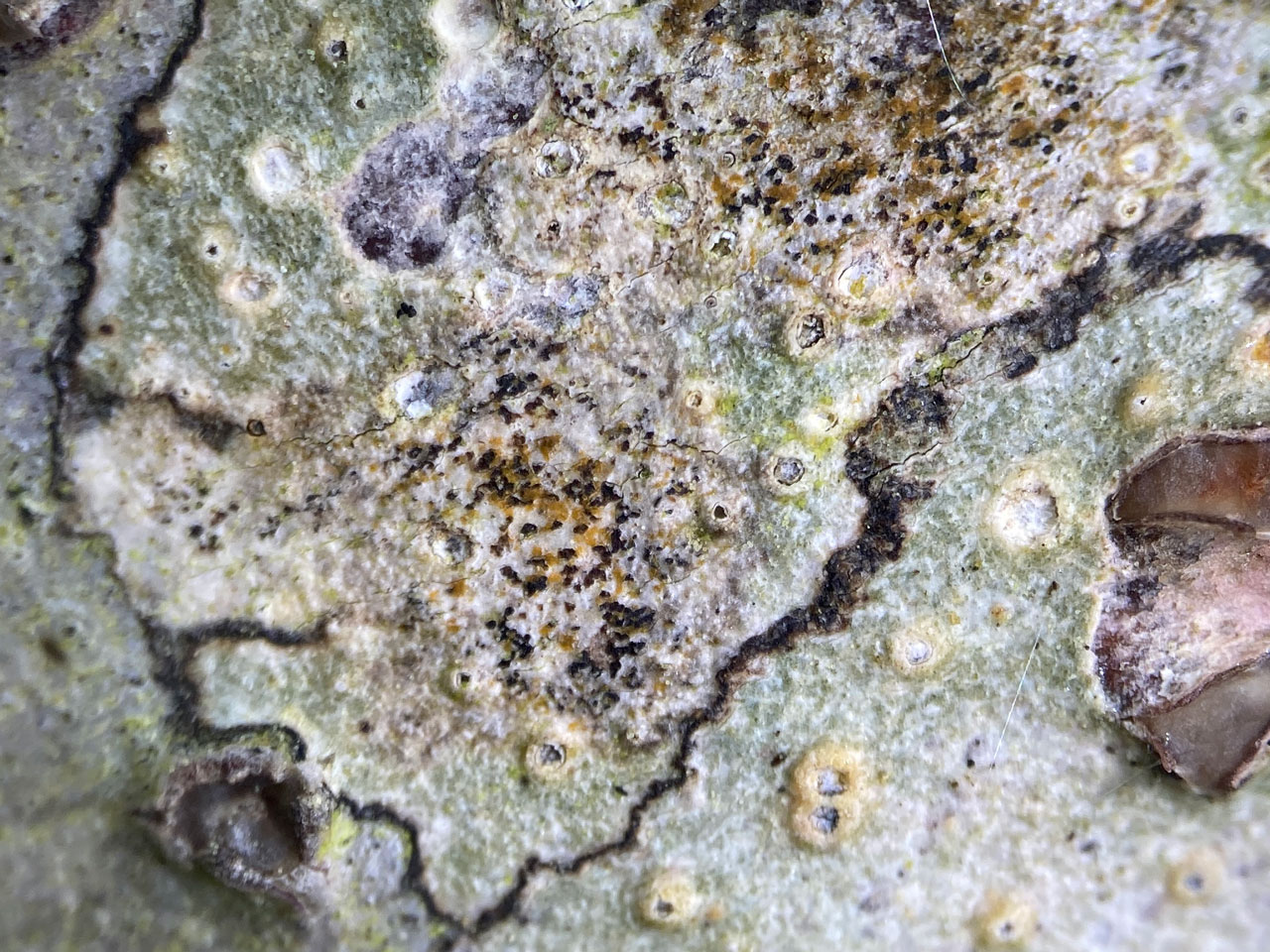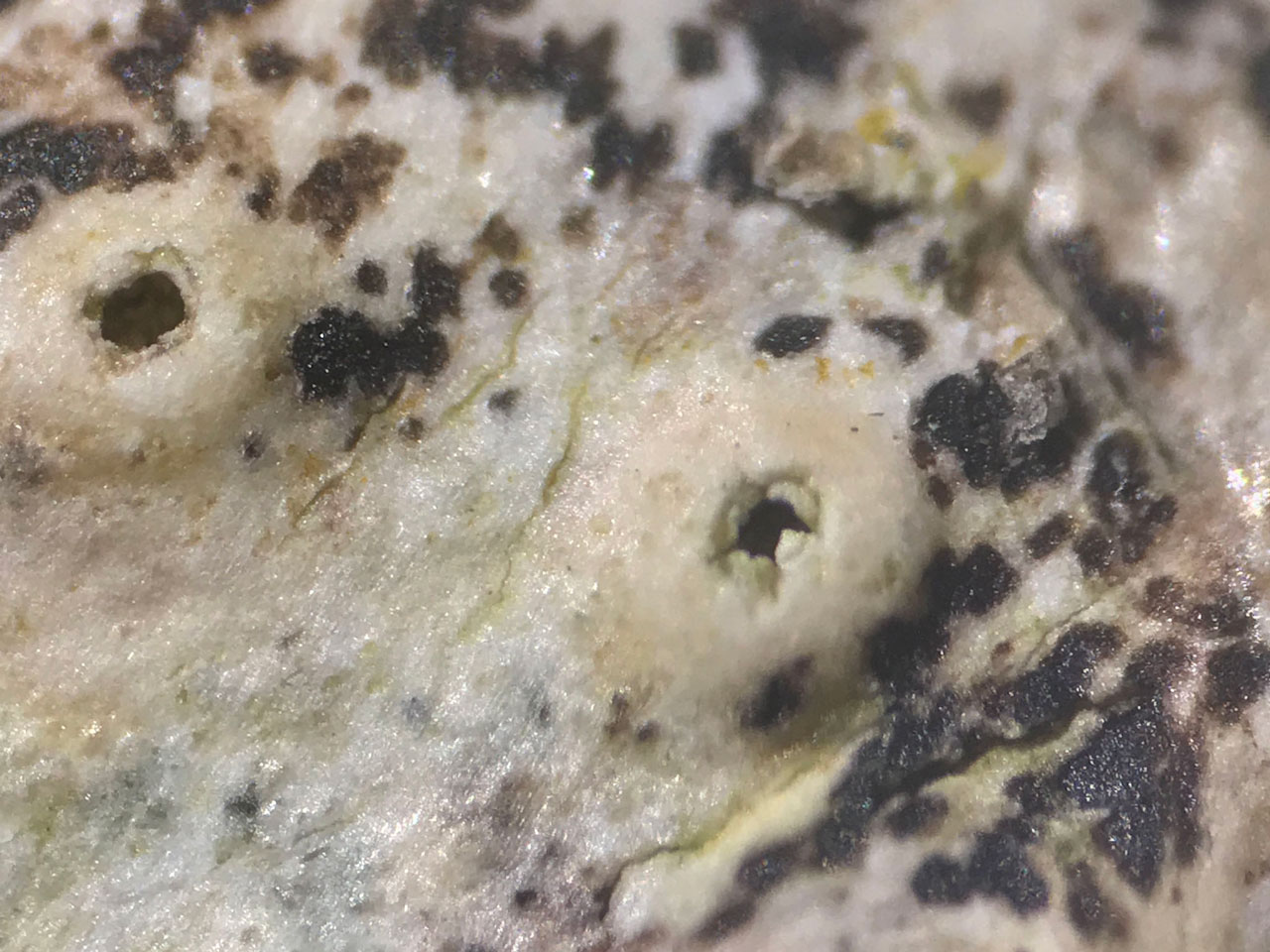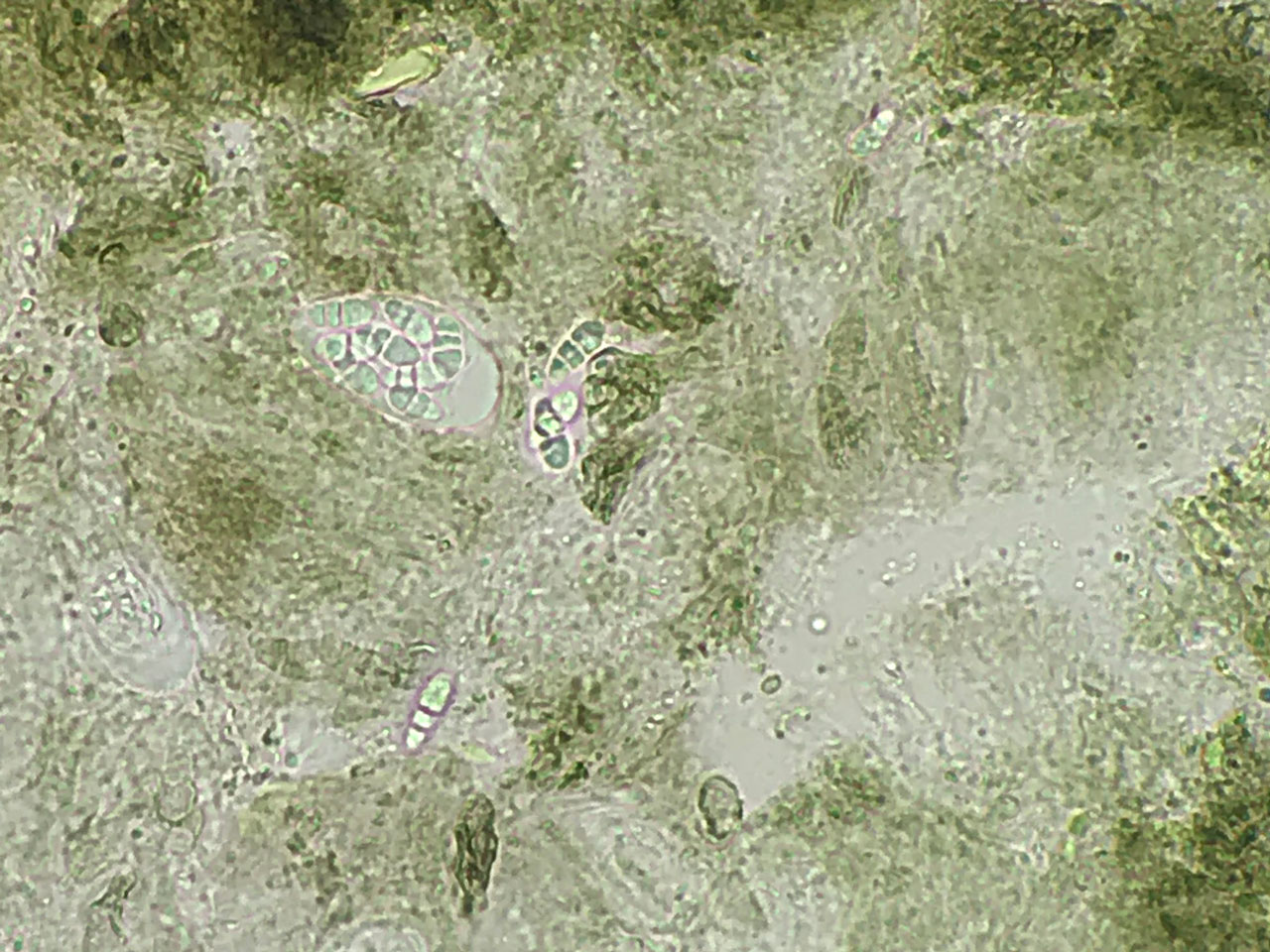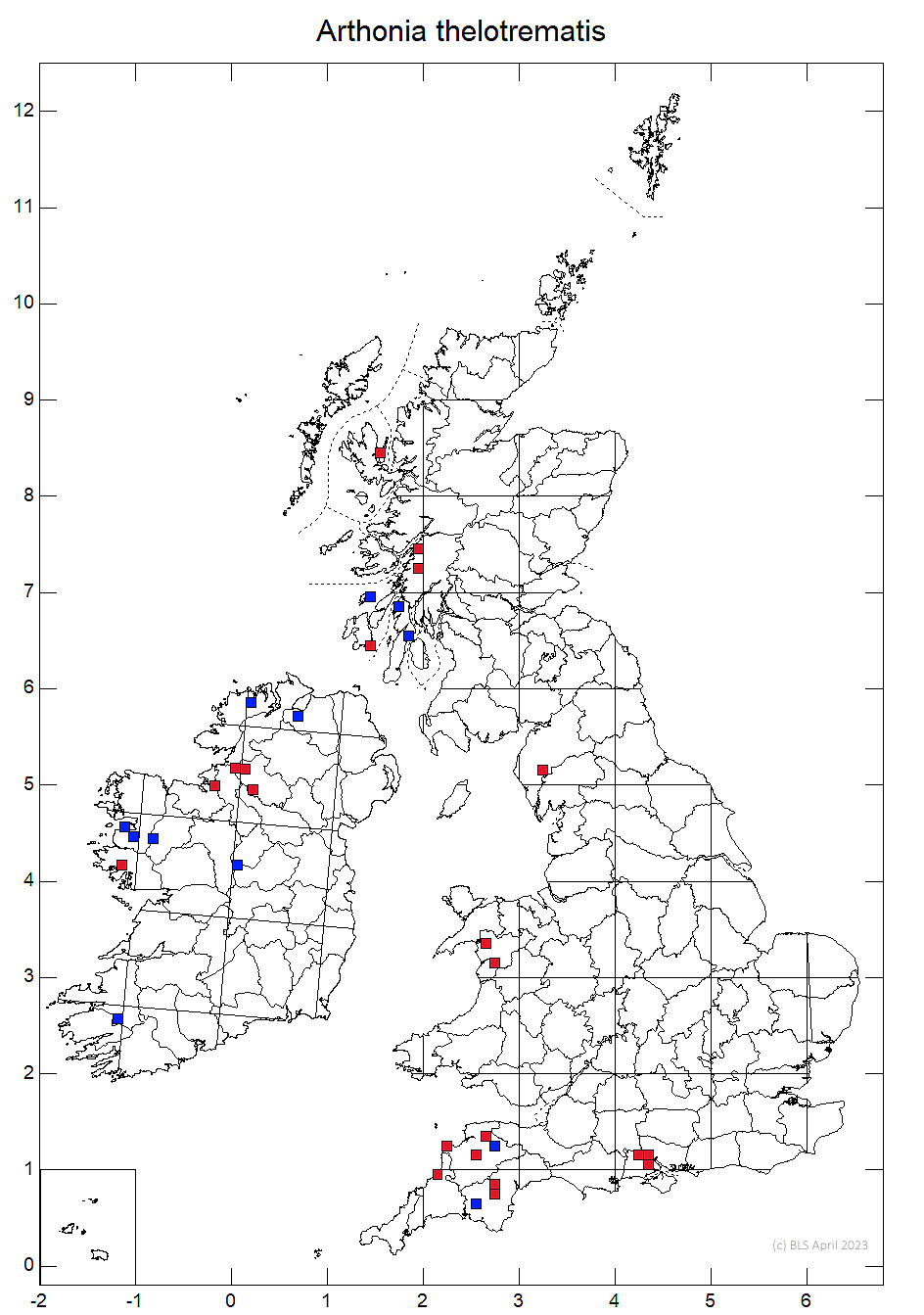Arthonia thelotrematis
This lichenicolous fungus forms small groups of tiny irregular fleck-like black apothecia in the thallus of its host Thelotrema lepadinum, which is visibly damaged by the infection. It is a rare species, occurring at very low densities within large populations of the host. It is found in lichen rich oceanic woodlands in the west, but unusually with more records from the south west than from the western Highlands.
Thallus absent, lichenicolous, forming circular to elliptical necrotic patches 3–7 × 1.5–5 mm. Apothecia crowded, developing below the surface of the bark (i.e. with an endophloeodal thallus) but soon erumpent, fleck-like, rounded to ± polygonal and 0.06–0.2 mm diam., or elongate and to 0.4 × 0.06–0.12 mm, sometimes slightly branched or bluntly stellate, dark red-brown to black, not pruinose; in section 55–60 μm tall; epithecium 12–15 μm tall, reddish brown, K+ olive; hymenium 33–35 μm tall, pale red-brown, K+ pale green, I+ red; hypothecium 5–15 μm tall, red-brown, K+ olive, I+ blue; paraphysoids rather scanty, sparingly branched, ca 1 μm diam., the apices often branched, brown-walled, 1.5–2.5 μm diam., a few sometimes with a dark brown cap 3–3.5 μm diam. Ascospores 11–14 × 4.5–5 μm, (2–) 3-septate, the apical cells enlarged, cylindric-obovoid, at first colourless and often with a thin perispore, later covered in dark brown granular warts. Lichen products not known.
Similar to Arthonia graphidicola, but differs in shorter ascospores and a brown hypothecium. This is the rarest of the lichenicolous fungi likely to be encountered growing on Thelotrema lepadinum. The most frequent Skyttea nitschkei, has ulcerate apothecia with a pore and characteristic rust-orange necrosis around the apothecia. Opegrapha thelotrematis, also had grouped apothecia, but these are lirellae.
On thallus of Thelotrema lepadinum on Hazel, Holly and Birch; parasitic. Generally found on Thelotrema lepadinum growing on acidic bark and occurs at very low densities within large populations of the host. Confined to high quality lichen rich woods and, usually for an oceanic lichen, has more records from S. W. England than western Scotland.

Rare. W. Scotland, Wales (Merionethshire), S.W. England, New Forest, W. Ireland.
A rare obligate fungus of Thelotrema lepadinum, found at low densities in large populations of it host in lichen rich oceanic woodlands. Likely to require woodlands remaining in good condition an hence large populations of the host, with increasing shade from the removal of extensive grazing the main threat.
Britain: Notable & International Responsibility Species
Cannon, P., Ertz, D., Frisch, A., Aptroot, A., Chambers, S., Coppins, B. J., Sanderson, N. A., Simkin, J. & Wolseley, P. (2020) Arthoniales: Arthoniaceae, including the genera Arthonia, Arthothelium, Briancoppinsia,Bryostigma, Coniocarpon, Diarthonis, Inoderma, Naevia, Pachnolepia, Reichlingia, Snippocia, Sporodophoron, Synarthonia and Tylophoron. Revisions of British and Irish Lichens 1: 1 - 48
